
®
Installation Instructions For:
G3® Pathway Stabilizer
5660 Westside Road, Redding, CA 96001 USA Ph: 877-356-2250 Fax: 866-356-8880
www.TechniSoil.com E-mail: info@TechniSoil.com
I. Features & Benefits
TechniSoil G3® Pathway Stabilizer (G3-PS) is a simple solution
for creating custom pathways and patio areas. This eco-friendly
liquid polymer stabilizer for decomposed granite (DG) and
crushed stone materials yields a durable, dust-free surface
in only a few basic steps. By bonding crushed aggregates
and nes, G3-PS enhances natural surfaces for the modern
landscape.
• Reduces tracking of loose materials
• Improves surface stability
• Easy to apply using standard equipment
• Minimizes dust, weeds, and erosion
• Low-maintenance
• Eco-friendly
II. Tool Recommendations:
• Shovel, pick, digging equipment
• Wheelbarrow
• Bow rake and/or grade rake
• Screed
• Shower head watering can or pressurized sprayer
• Masonry trowel
• Vibratory plate compactor
• Hand tamper
• Additional tools may be required for edge restraints
III. Material Recommendations:
G3-PS works best with 3/8” minus to 1/2” minus crushed stone
mixes, including but not limited to decomposed granite (DG),
crushed limestone, & granite screenings.
A linear gradation of angular crushed rocks to nes without
any dirt, clay, or sand is strongly recommended.
Aggregates with a moisture content of less than 3% are recom-
mended.
IV. Coverage
G3® Pathway Stabilizer will cover 15ft²/gallon on average using
two applications per project.
• 1st application will require 20ft²/gallon to fully saturate
aggregate before compaction.
• 2nd application requires 50ft²/gallon as a topcoat.
Recommended
Installation Rates:
Installation Phase: Coverage:
20 ft
2
per gallon
Pour-In
(Pre-compaction)
15 ft
2
per gallon
50 ft
2
per gallon
Topcoat
(Post-compaction)
TYPICAL USES:COVERAGE up to:
• Residential paths & patios
• Landscaping
• Planter beds
15 Ft
2
Per Gallon
(See coverage rates in Section IV)
Install guidelines and application rates may vary. If
product does not match bottle image at left, please
contact manufacturer technical support at 877-356-2250.

®
Installation Instructions For:
G3® Pathway Stabilizer
5660 Westside Road, Redding, CA 96001 USA Ph: 877-356-2250 Fax: 866-356-8880
www.TechniSoil.com E-mail: info@TechniSoil.com
V. Installation Recommendations
Consider complimentary weather conditions before, during,
and after any G3-PS application
• Do not install G3-PS less than 48 hours before or
after rainfall.
• G3-PS should only be installed when the outside
temperature is 55º F and rising.
• Avoid temperatures below 55º or above 90º F for any
phase of G3-PS installation or storage.
VI. New Project Application Guidelines
Personal protective equipment (PPE) is recommended:
• Gloves
• Safety glasses
Project planning
• Always consider proper slope and nished grade
of a G3-PS project to allow for proper drainage and
unoff, as well as ease of use with adjacent structures or
landscaping.
• For light weight paths and patios, use marker paint to
outline the project areas.
• Calculate the square footage of the project area to
determine material quantities needed for all aspects of
the project.
• Consider methods for excavation and removal of
native soil or existing structures, as well as trans-
portation, delivery, and installation of new materials.
Prepare subgrade
• Excavate project area accordingly. Considering
the subbase layer and crushed stone mix layer, it is
recommended to excavate the subgrade approximately
4” - 6” below nish grade.
• Weed or landscape fabric is not recommended, as it
can trap moisture below the surface layer.
• Use vibratory plate compactor to compact native
subgrade as needed for adequate compaction.
Edge restraints
• Edge restraints are recommended for best results,
optimal stability, and can greatly reduce degradation of
edges caused by foot trafc or otherwise.
• Edge restraints should not be higher than surface layer
nish grade.
• If project does not call for installation of edge restraints,
proper compaction of edges is required, typically using
a hand tamp.
• Some common examples of edge restraints used in
this capacity are;
• Concrete landscape curbing
• Bender board
• Plastic or aluminum edging
• Pressure treated lumber
Install subbase
• Be sure to consider proper slope when constructing
subbase to allow for proper water runoff. Do not slope
a surface towards structures like houses, sheds, pools,
or otherwise without considering proper drainage
channels or runoff issues.
• Subgrade should consist of at least 2” - 4” of compacted
3/8” - 3/4” minus structural base rock or aequate
crushed stone mix for subgrade construction to provide
optimal load bearing support for the G3 stabilized layer.
• Use vibratory plate compactor to compact subgrade
3 - 4 passes, or as needed for adequate compaction.
If subbase material is dry, a light amount or water
may be needed for proper compaction.
Install crushed stone mix layer per Section III above
(Material Selection Recommendations).
• Install up to 2” of qualied crushed stone mix material
and grade consistently into place using a rake and/or
screed. Installing more than a 2” depth of surface layer
material can ultimately reduce load bearing strength.

®
Installation Instructions For:
G3® Pathway Stabilizer
5660 Westside Road, Redding, CA 96001 USA Ph: 877-356-2250 Fax: 866-356-8880
www.TechniSoil.com E-mail: info@TechniSoil.com
VI. New Project Application Guidelines (continued)
• DO NOT COMPACT material before G3-PS has been
applied! For best results and proper absorption of
G3-PS, the crushed stone mix material should
only be graded into place before pouring liquid
stabilizer in.
• The material should be graded approximately 1/2” - 3/4”
above the planned nish grade to allow for proper
compaction. Typically, a crushed stone mix will reduce
by 30% of its overall graded height after compaction.
Considering this, 2” of material will compact to a nal
depth of approximately 1.5”.
• Consider slope during installation of material. Proper
nished grade slope or crowning of the surface will
ensure adequate runoff for drainage purposes.
Apply TechniSoil G3-PS
• Apply G3-PS to graded material at a rate of 20ft²/gallon
using a standard watering can with shower head
or a pressurized hand-held or backpack sprayer.
For larger applications, electric, high-capacity sprayers
may be used.
• Allow 45 - 90 minutes for G3-PS to fully absorb into the
aggregate. Cool, overcast weather and/or shading can
increase absorption time. If after 90 minutes the surface
is still saturated or appears muddy, wait an additional
15 - 30 minutes to allow G3-PS to fully absorb before
compaction.
• Proper compaction may not be achieved if material is
too saturated and can create aesthetic blemishes.
• Do not allow G3-PS liquid to completely dry before
compacting, as this will adversely affect the overall
structural and cross-linking strength.
Compact surface
• After G3-PS is fully absorbed into material,compact
surface layer to 95% or greater compaction using a
vibratory plate compactor (typically 3 - 4 longitudinal
passes).
• Use a hand tamper in areas that ca not be reached by
the plate compactor.
• If the surface looks smeared or sticks to th bottom of
the compactor, wait an additional 20 - 30 minutes
before attempting to compact.
• If cosmetic repairs are required, use a hand tamp and/or
common masonry trowel to make adjustments as
needed.
Apply TechniSoil G3-PS Topcoat
• Apply a topcoat 12 - 24 hours after the rst
application or once the surface has completely dried at
a rate of 50ft²/gallon.
• Surface is completely dry and ready to use when it is
hard to the touch.
• Allow 24 - 72 hours to fully cure.
Clean all tools
• Immediately after use, clean tools by simply rinsing
tools with water and a soft bristle brush.

®
Installation Instructions For:
G3® Pathway Stabilizer
5660 Westside Road, Redding, CA 96001 USA Ph: 877-356-2250 Fax: 866-356-8880
www.TechniSoil.com E-mail: info@TechniSoil.com
VIII. Existing Project Application Guidelines
Before treating an existing project, carefully consider the following;
• Surface layer material gradation, compaction, depth,
and age
• Subbase construction
• Edge restraint construction
• Previous modications of surface layer materials
If assessment of the previously stated variables coincides with
our ‘New Project’ guidelines, then proceed to next step.
• If assessment reveals issues that may adversely affect
the success rate of installation, then it is recommended
to renovate the project accordingly.
• Scarify upper 1” - 1.5” of surface using a tiller or rake.
Surface layer material should be broken apart as close
to its original gradation as possible. Clumped materials
or improper separation can result in poor stabilization
and compaction.
• Amend surface layer material with additional material
as needed to achieve proper slope, grade, crown, and/
or height. DO NOT COMPACT.
• Refer to recommended application guidelines.
IX. Storage
Store G3-PS out of direct sunlight in areas with a temperature
range of 55º - 90º F.
X. Maintenance
Treated areas should withstand normal conditions for 12 - 24
months before a maintenance coat is needed.
To rejuvenate and increase the life-span of the surface apply a
maintenance coat at approximately 150ft²/gallon.
If surface has been damaged, make any repairs to the surface
before applying a maintenance coat.
To repair a section of G3 pathway, place the appropriate amount
of crushed stone in a 5-gallon bucket and add enough G3-PS
to make a consistent mixture of aggregate chips and stone dust.
Mix aggregate and G3-PS with a dowel or paint stirrer and
apply the mixture to the repair area using a masonry trowel or
equivalent. Smooth the material to grade. Use a hand tamper to
compact into place.
Approximately 6 - 24 hours after repairing the surface, pour or
spray a light coating of G3-PS at 50ft
2
/gallon over the repaired
area. Cure time is within 24-72 hours or when the surface is dry
and solid.
XI. Warranty
TechniSoil Global, Inc. warrants this product to be free from
defects. Where permitted by law, TechniSoil makes no other
warranties with respect to this product, express or implied,
including without limitation the implied warranties of merchant-
ability or tness for particular purpose. The purchaser shall be
responsible to orchestrate their own tests to determine the suit-
ability of this product for their particular purpose. TechniSoil’s
liability shall be limited in all events to supplying sufcient prod-
uct to re-treat the specic areas to which product proven to be
defective has been applied. Acceptance and use of this product
absolves TechniSoil from any other liability, from any and all
sources, including liability for incidental, consequential or resul-
tant damages whether due to breach of warranty, negligence or
strict liability. This warranty may not be modied or extended by
representatives of TechniSoil, its distributors or dealers, inde-
pendent contractors, clients or end-users of any kind.
-
 1
1
-
 2
2
-
 3
3
-
 4
4
Ask a question and I''ll find the answer in the document
Finding information in a document is now easier with AI
Related papers
-
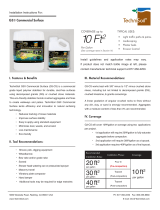 TechniSoil CS5 Installation guide
TechniSoil CS5 Installation guide
-
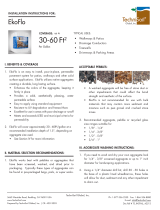 TechniSoil EF5 Installation guide
TechniSoil EF5 Installation guide
-
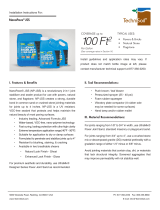 TechniSoil NP5 Installation guide
TechniSoil NP5 Installation guide
-
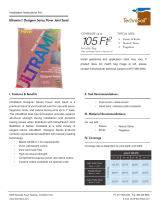 TechniSoil UMPJS50-002 Installation guide
TechniSoil UMPJS50-002 Installation guide
-
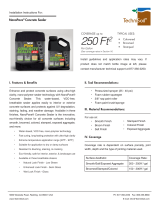 TechniSoil CS-LS-1 Installation guide
TechniSoil CS-LS-1 Installation guide
-
TechniSoil BB5 Installation guide
-
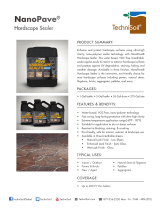 TechniSoil HS-G-5 Operating instructions
TechniSoil HS-G-5 Operating instructions
-
 TechniSoil NP5 User manual
TechniSoil NP5 User manual
-
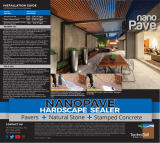 TechniSoil HS-SG-5 User manual
TechniSoil HS-SG-5 User manual
Other documents
-
 DecoArt DS134-T1 User manual
DecoArt DS134-T1 User manual
-
 Aquaphalt 211728 Installation guide
Aquaphalt 211728 Installation guide
-
Keystone RET0910G2220A Installation guide
-
Keystone RET0910G2220A Installation guide
-
Keystone RET0912X0000A Installation guide
-
Keystone RET0912X0000A Installation guide
-
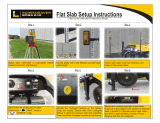 Ligchine Screedsaver BOSS 240 Operating instructions
Ligchine Screedsaver BOSS 240 Operating instructions
-
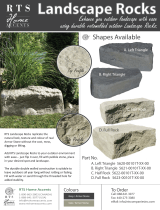 RTS Home Accents 562100101T5481 Specification
RTS Home Accents 562100101T5481 Specification
-
Solstice Sculptures BASKET BOY BRONZE EFFECT User manual
-
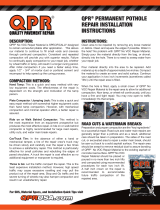 QPR MRN12 Installation guide
QPR MRN12 Installation guide
















